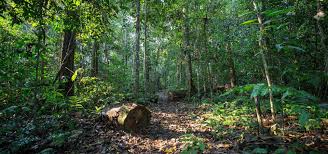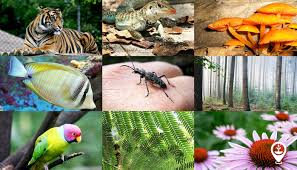Efforts have been made in the previous articles to define the concept of biodiversity along with its historical perspective and levels. Additionally, the elements and characteristics of ecosystems, genetic erosion, its causes, and management were well elucidated.
This article will focus on the types and uses of biodiversity. The knowledge gained here will help to appreciate the nature of biodiversity and the ability to manage it in the Nigerian environment.
Read Also: How to Grow Paw-Paw (papayas): Beginners Business Guide
Types of Biodiversity

There are three main types of biodiversity: functional diversity, taxonomic diversity, and genetic diversity.
1. Functional Diversity: Functional diversity ensures that every task that needs doing within an ecosystem gets done. According to Silvert (2011), functional diversity doesn’t help to have thousands of species of herbivores in a system if there are no primary producers to feed them and no detrivores to clean up after them.
2. Taxonomic Diversity: Taxonomic diversity is the most widely recognized form but may also be the least meaningful. It involves identifying the number of distinct taxa (usually at the species level) and possibly weighting them by the abundance of individuals. Calculations of taxonomic biodiversity tend to be limited by the taxonomic expertise available, especially at lower trophic levels (Silvert, 2011).
3. Genetic Diversity: Genetic diversity has long been recognized in agriculture, where the danger of disease wiping out a single strain of organisms is prevalent. Genetic diversity protects ecosystems against other forms of environmental change, not only against disease.
Diversity within a species is the driver behind evolutionary adaptations. The concept of genetic diversity also applies between populations, since species replacement in response to environmental change usually indicates that the replacement species is genetically better suited to the changed conditions.
Genetic diversity becomes especially important in the context of climate change and other local or global environmental shifts, as it plays a critical role in determining how communities will adapt to stress (Silvert, 2011).
Read Also: How To Grow Apple Trees
Uses of Biodiversity

1. Food and Shelter: Biodiversity is very important in the provision of food, fuel, and fiber for domestic consumption while it equally serves as materials for shelter and other buildings. Apart from those managed within the ecosystem, many more grow in the wild.
2. Environmental Maintenance: Biodiversity helps in the detoxification and decomposition of waste, stabilization, and moderation of the Earth’s climate. To an extent, it also helps in the moderation of floods, control of droughts, temperature, and extremes of wind forces.
3. Agriculture: Biodiversity plays an important role in the generation and renewal of soil fertility, including nutrient cycling, which results from its decomposition. Biodiversity is responsible for the pollination of plants, including many crops, and also in the control of pests and diseases. The maintenance of genetic resources as key inputs to crop varieties and livestock breeds, medicines, and other products is attributed to biodiversity.
4. Forest Products: An estimated harvest of 50,000 to 70,000 plant species is used for traditional and modern medicine worldwide. About 100 million metric tons of aquatic life, including fish, mollusks, and crustaceans, are taken from the wild every year. Similarly, meat from wild animals forms a critical contribution to food sources.
In conclusion, the types of biodiversity include functional diversity, taxonomic diversity, and genetic diversity. The uses of biodiversity have been categorized into the provision of food and shelter, environmental maintenance, enrichment of soil fertility for agriculture, and forest products.
Do you have any questions, suggestions, or contributions? If so, please feel free to use the comment box below to share your thoughts. We also encourage you to kindly share this information with others who might benefit from it. Since we can’t reach everyone at once, we truly appreciate your help in spreading the word. Thank you so much for your support and for sharing!
Read Also: Advantages of Waste Recycling

